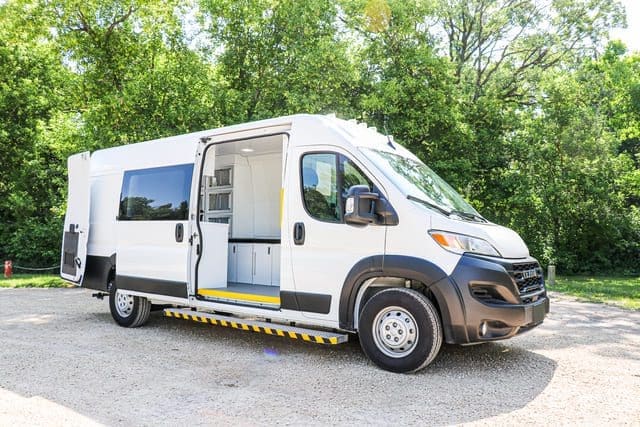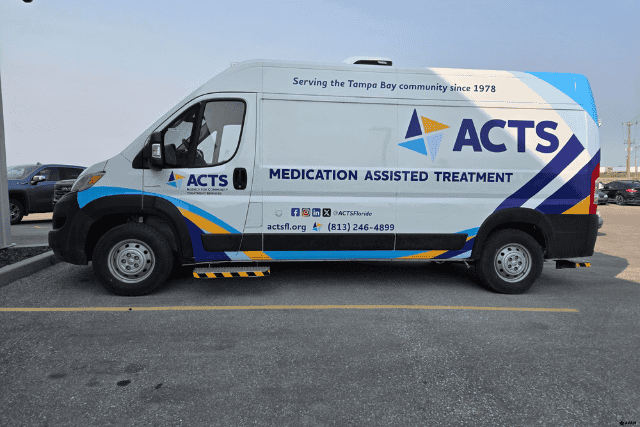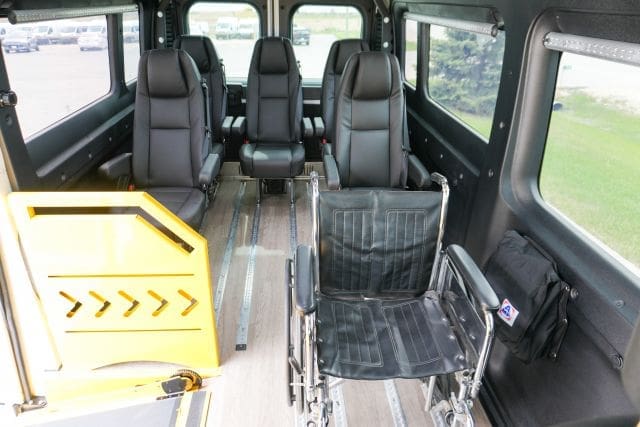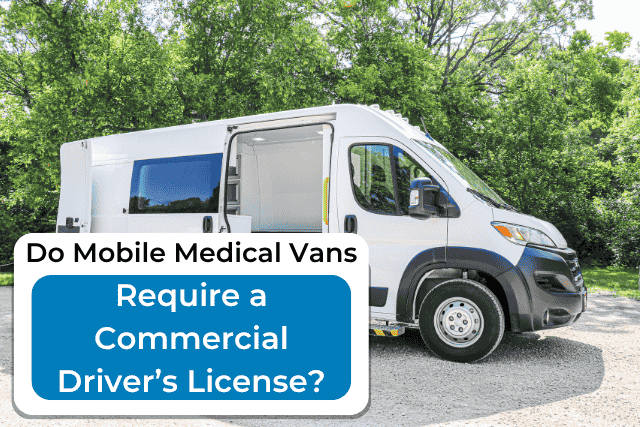If you live in the U.S., you probably know how hard it can be to access quality healthcare. Whether it’s the high cost of insurance, the long wait times, or the lack of availability, many barriers prevent people from getting the care they need.
At AVAN Mobility, we work hard to manufacture mobile medical units so organizations like yours can use them to break down barriers to healthcare that people face across the country. Over the past decade, we’ve manufactured hundreds of mobile medical units, and we’ve seen firsthand how they positively impact people’s lives.
In this article, you’ll discover the typical healthcare challenges people encounter in the U.S. and how mobile medical units will help remove these obstacles, making it easier for individuals to access care.
What are some healthcare barriers in the U.S.?
Healthcare is very important for everyone. It helps us stay healthy, prevent diseases, and treat illnesses. However, not everyone in the U.S. can access healthcare easily. Many barriers make it hard for people to get the care they need. Here are six of them:
1. Stigma and bias
Some people in the medical community discriminate against others based on race, immigration status, sex, gender, and sexual orientation. This can make it hard for patients to get specialized support for things like mental healthcare services or hormone replacement therapy. A paper from the American College of Physicians mentioned how stigma can affect access to care. It also mentions how it can affect patients’ willingness to seek specialized support in mental healthcare.
2. Geographic barriers
People living in rural areas have fewer healthcare providers per person and must travel farther for care. According to the National Rural Health Association, rural residents are more likely to be uninsured or underinsured than their urban counterparts. The shortage of healthcare providers and clinics in certain regions makes it hard for people to receive timely care.
3. High cost of care
The high cost of healthcare in the U.S. makes it hard for people to get medical help. Medical costs, like insurance payments and medication, can be a big financial burden for people and families. A lot of Americans, especially those without insurance or high deductibles, often hesitate to get medical care due to the costs.
This situation affects their health and their financial well-being. It can force them into debt to cover medical bills. Addressing the issue of high healthcare costs is crucial to ensuring that healthcare is truly accessible to all.
4. Healthcare shortages
According to data from the Health Resources & Services Administration, the United States is currently facing shortages of healthcare professionals. Specifically, there’s a need for over 17,000 extra primary care practitioners, 12,000 dental health practitioners, and 8,200 mental health practitioners in areas with identified shortages.
In 2034, the American healthcare system may fall short by as many as 124,000 doctors, with around a third of this gap falling under the category of primary medicine. It’s not only doctors; nurses, technologists, and other healthcare roles are also expected to be in short supply. This shortage affects everyone, especially people in areas with limited healthcare access.
5. Language and cultural barriers
Healthcare providers and patients may not share the same language or culture, which can create communication barriers and misunderstandings. Language barriers can affect the quality and safety of care, as patients could struggle to express their needs, preferences, or concerns, or understand their diagnosis, treatment, or instructions.
Cultural barriers affect the trust and rapport between providers and patients, as they may have different beliefs, values, or expectations about health and illness. Providers may also lack cultural competence or sensitivity and may not respect or accommodate the diverse needs of their patients.
6. Personal and social factors
In the United States, several personal and social factors are barriers to healthcare access. These factors can make it tough for individuals to get the medical care they need. Some personal and social factors include:
Education: Limited education makes it difficult for people to understand healthcare options and information. People with lower education levels might not know how to navigate the system.
Health literacy: Some individuals struggle to understand health-related information and instructions, making it hard for them to manage their health effectively.
Transportation: Lack of reliable transportation can prevent people from getting to medical appointments.
Support systems: People without a strong support system, such as family or friends, have a harder time accessing healthcare. They don’t have anyone to help them with appointments or transportation.
What are mobile medical units?
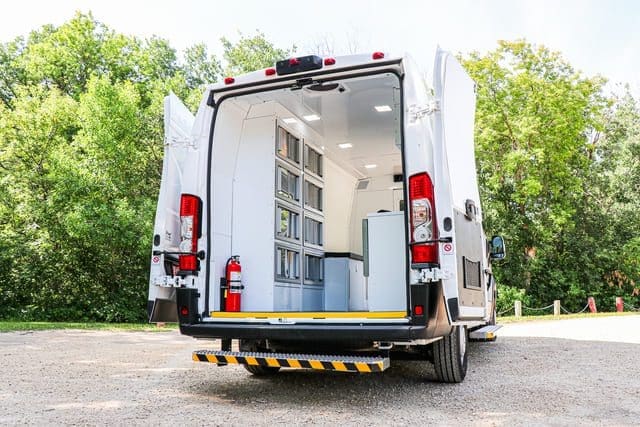
Mobile medical units are like medical clinics on wheels. They travel to places where people have a hard time getting to a regular doctor’s office. Here’s what you need to know about them:
What they do: Mobile medical units offer a variety of medical services. They’re not just for medical check-ups; your organization can use them to give vaccinations, run tests, offer mental health support, and even do some small surgeries.
Helping communities: These units are ideal for neighborhoods that are far from hospitals or clinics, especially in rural areas.
Flexibility: Mobile medical units park in areas where there’s a temporary need for healthcare, like after a disaster. But they also help people in places with few healthcare options. For example, some remote areas in Kentucky and Tennessee face challenges to healthcare access due to their geographical isolation and rugged terrain.
Prevention: They don’t just treat sickness. They also focus on stopping problems before they start. This means they will do check-ups and share information to help people live healthier lives.
Customizable: Mobile medical units can be customized to fit the needs of different healthcare providers. For example, your organization can get a portable X-ray machine installed to analyze patients with possible bone fractures.
How do mobile medical units break down barriers to healthcare?
Mobile medical units are on a mission to make healthcare accessible to everyone, no matter where they are in the United States. Let’s see how these vehicles tackle some of the most significant barriers to healthcare:
1. Stigma and bias
In some parts of the U.S., there are still biases in the medical community. Certain individuals may unfortunately encounter instances of unequal treatment due to factors like their race, immigration status, and gender.
This can make it feel a bit uncomfortable for them to get specialized support like mental healthcare or help with substance abuse. Mobile medical units provide care directly in communities, which is more inclusive and reduces the impact of stigma and bias.
2. Geographic barriers
In rural areas of the U.S., it’s tough to find a doctor nearby. Mobile medical units travel to these areas, ensuring that even those living far away from regular clinics can get medical help. This is a big relief, especially for folks who have to drive long hours to see a doctor.
3. High cost of care
Healthcare in the U.S. can be expensive. Some people skip going to the doctor because they can’t afford it. Mobile units offer more affordable care options. They’re often supported by grants or nonprofit organizations, which means they can provide services at lower costs. This helps people avoid the heavy financial burden of medical bills.
4. Healthcare shortages
As discussed earlier, the U.S. is expecting a shortage of healthcare professionals. Mobile medical units help fill this gap by providing essential healthcare services in areas where there are too few doctors or nurses. This ensures that no one misses out on care due to a lack of healthcare providers.
5. Language and cultural barriers
Sometimes, doctors and patients don’t speak the same language or share the same cultural background. Mobile units often have culturally trained staff who can bridge this gap, ensuring that communication is clear and patients feel respected and understood.
6. Personal and social factors
Organizations with mobile medical units understand that not everyone can easily get to a clinic. They come directly to their patients, breaking down barriers related to transportation and a lack of support systems. People with limited education or health literacy can also get help because mobile units provide easy-to-understand information.
Driving change: a mobile medical van’s impact on accessibility
Imagine a town called Willowville. It’s a small, tight-knit community in the U.S., nestled far away from the bustling city. It’s a place where people know each other by name, where life is simple and sweet. But there’s a problem. Access to healthcare is a challenge. Residents have to travel long distances just to see a doctor.
In Willowville, the residents experience several barriers to healthcare. The nearest hospital is a 5-hour drive away. For the elderly, disabled, and families with limited transportation, this journey is daunting. Medical check-ups and treatments are often postponed or skipped altogether, making health problems worse.
AVAN Mobility to the rescue
That’s where AVAN Mobility’s mobile medical vans come into the picture. An organization learns about the need for healthcare in the area of Willowville and decides to get funding and purchase a mobile medical van from AVAN Mobility. Here’s how they help Willowville:
Bringing the doctor to the people: The organization’s new mobile medical unit parks right in the heart of Willowville. No need for long drives or exhausting journeys. The doctor comes to their doorstep.
Accessibility for all: The unit is designed to accommodate everyone, including those with mobility challenges. The interior is spacious, and friendly staff are ready to assist.
Preventive care: Regular check-ups and early interventions are now a reality. The unit offers services from basic check-ups to more advanced treatments, all within reach.
A sense of community: The mobile unit becomes a familiar face in Willowville. Residents build a connection with the staff, making healthcare a less intimidating experience.
Thanks to the mobile medical unit, Willowville experiences a transformation:
- People are healthier and happier, knowing they can access healthcare without hassle.
- The community is more connected, with neighbors coming together during medical visits.
- Willowville becomes a shining example of how healthcare can be inclusive and accessible, no matter where people live.
At the heart of AVAN Mobility’s vision lies the belief that healthcare should be within reach of everyone. We’re not just providing medical vans; we’re creating a healthier, more connected world, one community at a time. And Willowville is just one example of our mission in action.
Your path ahead with AVAN Mobility
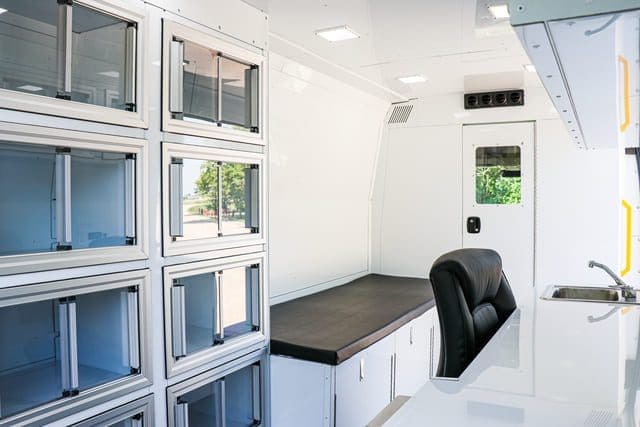
You likely landed on this article while researching mobile medical units. If you’ve made it this far, you’re now aware of some of the common barriers to healthcare in the U.S. You also know more about how our mobile medical units at AVAN Mobility can break down these barriers.
At AVAN Mobility, we are driven by a profound mission: to be the beacon of hope for those living in the farthest corners of our nation. Our vision transcends boundaries, as we aspire to empower organizations like yours to extend a healing hand to those who need it the most.
Now that you know more about how mobile medical vehicles can be used, your next step is to read our article about how to choose a mobile medical van. You should also take a look through our guide on the five tips on how to start a mobile medical clinic.
With our vehicles, you can reach out to people not only in need of medical care but also those grappling with the daunting challenges of substance abuse, the silent struggles of mental health, and countless other unspoken battles. Together, we can bring not just healthcare but a lifeline of compassion, understanding, and transformation to every corner of America.
